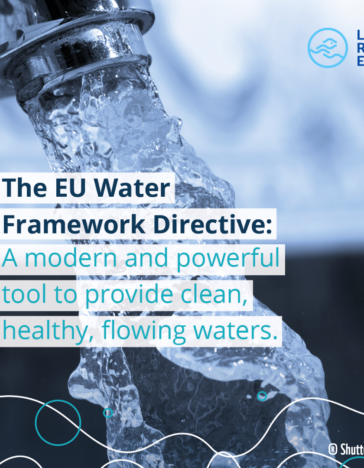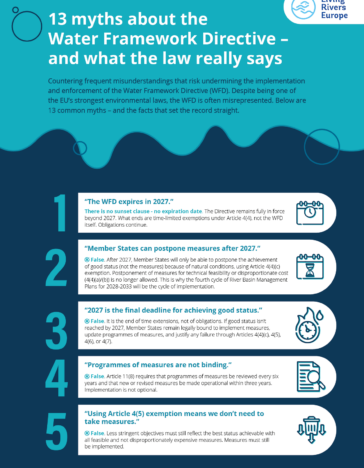
The Water Framework Directive: a powerful tool for clean, healthy, flowing waters
-
Rivers and Lakes
With less access to clean water, and rivers drying up, floods, droughts, and pollution are taking a toll on ecosystems and people. And while climate change is impacting our waters, another truth lies behind it: Europe’s growing water crisis stems from the failure to fully implement existing EU water laws.
The Water Framework Directive (WFD), adopted in 2000, has been the legal backbone of freshwater protection. It requires all Member States to achieve good status for all water bodies by 2027 – a goal that remains unmet. Today, only 39,5% of surface waters are in good ecological status. This is not a legal limitation, but a political failure.
At the same time, climate impacts, pollution and economic risks are rising. According to the World Economic Forum, five of the top ten global business risks are now water-related. Healthy rivers and groundwater are fundamental to Europe’s water and food security, public health and competitiveness. The WFD provides the legal tools to address these risks: pollution control, abstraction permits, ecological flow standards, cost recovery and basin-scale restoration.
Under the Living Rivers Europe coalition, we publish this new report highlighting that 2027 is not the end of the WFD. The Directive remains fully in force beyond that date. The report explains why and how Member States must continue meeting its core legal obligations.


